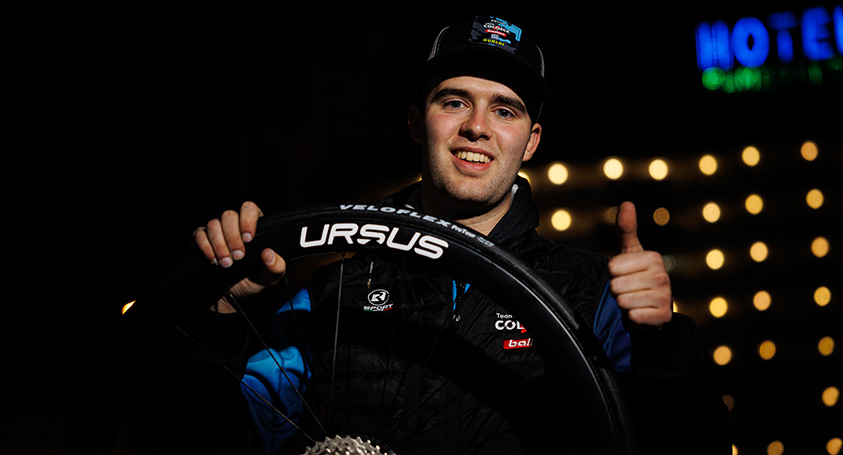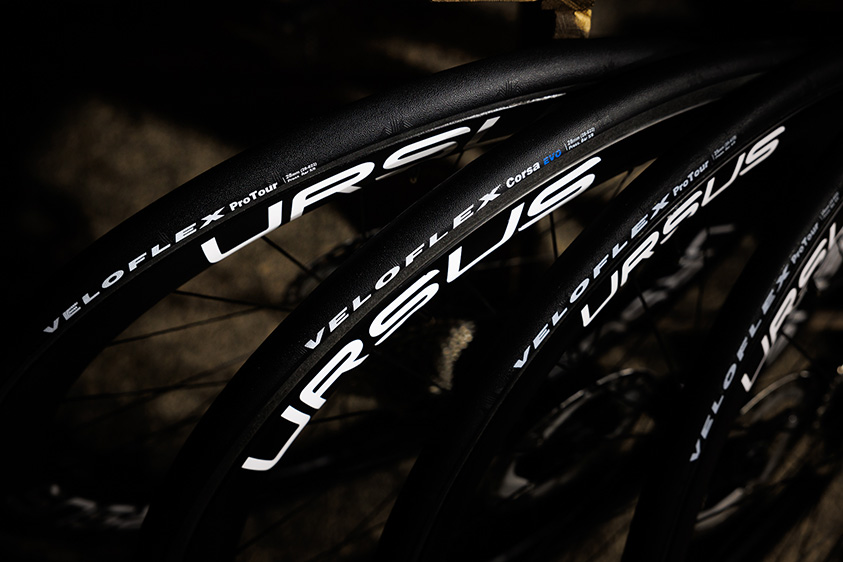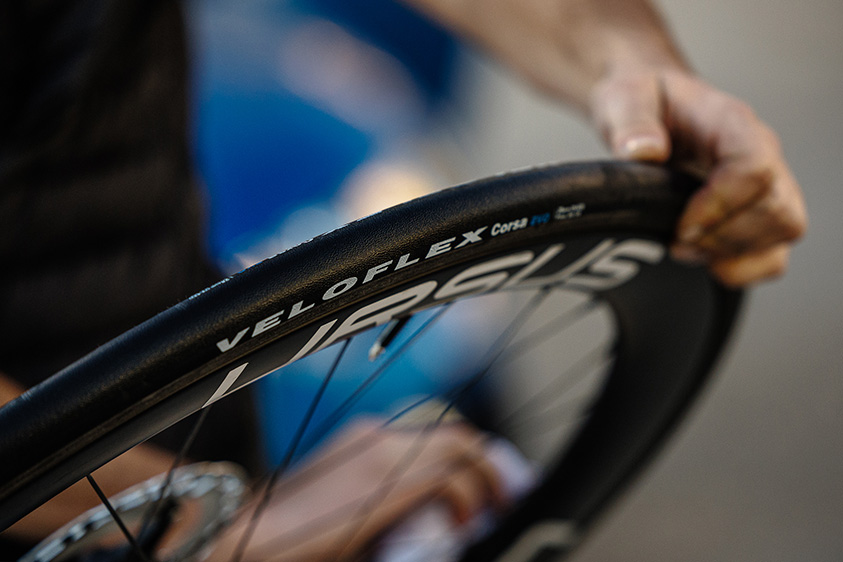Road Racing Bikes: How to Find the Best Inflation Pressure

Federico Gualdi, a young mechanic for Team U23 Colpack Ballan Csb, came to visit us at Veloflex, and we had the chance to learn more from him about how the team worked during the training camp in Calpe, Spain, last fall to determine the ideal tire pressure for racing bikes with the aim of enhancing performance. Here are the questions we asked him.
What type of bike tires did you choose for this season?
This season, the team is racing with bikes from the historic Milanese brand Cinelli, specifically a limited edition of its flagship Pressure.
Lightness, responsiveness and versatility are the foundations of this model, so we chose to outfit it with Veloflex tires: 28mm Corsa EVO clinchers and 28mm ProTour tubulars for road races; 25mm ProTour RACE tubulars for time trial races.
The choice of whether to use clinchers or tubulars is typically left up to the individual riders; typically, rouleurs and sprinters choose clinchers, while climbers favor tubulars because they are softer and have more grip.
Because inner tubes and clinchers still weigh less than latex and tubeless clinchers combined, we have opted against using tubeless in favor of tubulars.
We used the new Corsa EVO TLR 32mm clinchers in particular races like the Paris-Roubaix Espoirs, the under-23 version of the Monument classic, to have more safety in case of a puncture, given the rough terrain. Out of six riders, we only had one puncture after a fall during the race.

How did you research the best bike tire pressure for maximum performance?
We worked very well during the 15-day retreat in Calpe, Spain, where I gave all of the riders the opportunity to try out the race bikes and all of the equipment.
The riders had plenty of time to test various settings on different bikes until they found the one that worked best for them. We tested in all kinds of weather, from hot to rainy.
We started by setting the average pressure marked on the tire shoulder, and then we gradually reduced the pressure, 0.2–0.3 bar at a time. Because the riders are light, the roads are often dirty, and the asphalt isn't perfect, we realized it was necessary to lower the pressure. After several tests we were able to determine the ideal pressures.
What factors were most important in determining the proper pressure?
The rider's weight and riding style, the conditions of the ground which you ride on, and the weather conditions are definitely the most important factors affecting the definition of bicycle tire pressure.
In Calpe, for example, we were able to work very well and we found different weather conditions to test on, but the asphalt had saltiness and was particularly slippery, so that must be considered.
We encountered the same conditions at the Laigueglia Trophy, with rain and slick asphalt. When you inflate your bike's tires before each ride, you should always consider the type of terrain you will encounter.
What pressures do professional riders use?
According to the type of race, the asphalt, and the weather, the team riders adjust their tire pressures. After the various tests described above, we went as high as 6.5 bar at the rear wheel and 6 bar at the front on dry asphalt, 5.5 bar at the rear wheel and 5 bar at the front on wet asphalt, and in extreme conditions with the rider who prefers particularly soft rubber, we even went down to 5 bar at the rear and 4.5 bar at the front, without having safety and bead-breaking problems.
We discovered the right settings with Veloflex for maximum smoothness and grip, and we even won a downhill race with Lorenzo Nespoli, who won in Reda di Faenza in his first Under-23 season by out-sprinting everyone.

Did you take into account the loss of tubular inflation pressure?
Yes, I had anticipated a loss of pressure at the beginning of the year, because I typically inflate the tires the morning of the race, we get to the venue around noon, where we check the pressure just before the race starts. The tire must then last until the race is over. The loss of tubular pressure with Veloflex is practically non-existent; the loss is so minor that simply inflating to the proper pressures in the morning is enough.
What advice would you give to amateurs who ask what the ideal pressure is?
I believe that the pressures recommended by Veloflex are accurate; you can also use the website's pressure gauge as a starting point. It is a useful tool for determining the starting point for inflation. As previously stated, there are no absolute or universal values for everyone; instead, you must perform tests and take into account a wide range of variables to determine your ideal pressure. In addition to the fact that we hardly ever ride on clean roads, amateur cyclists frequently weigh more than professional cyclists, and on a Sunday ride, they may be more concerned with comfort than with winning. All of these considerations must be made in order to have a soft, safe tire that has good grip while remaining smooth.
 English
English